Lure of The Loire: A Range of Red Grapes, Soils and Microclimates Allow for A Diversity of Wines and Styles by an Upstart Generation 12-Bottle Sampler $369
The media engine behind French wine seems driven primarily by two wheels—Burgundy and Bordeaux—while the Loire is often relegated to third-wheel status. And it’s not from want of praise: The vivid, crisp, hauntingly aromatic and almost supernaturally focused wines of the Loire Valley are arguably the pinnacle of each particular varietal.
And there are many. 24 varieties flourish throughout the Valley (including indigenous, newly-revived grapes such as Pineau d’Aunis) alongside the Big Four, Melon de Bourgogne, Sauvignon Blanc, Chenin, and Cabernet Franc. The Loire Valley is the biggest producer of white wine in France and the second biggest producer of sparkling wines; it encompasses four sub-regions with more than 51 appellations surrounding the Loire River and its tributaries, flowing from the east around Sancerre to the west toward Muscadet on the Atlantic coast at the mouth of the river.
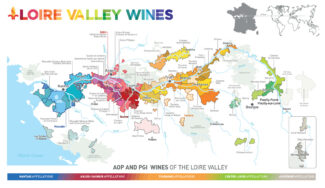
The Loire is also a hot-bed for experimental winemakers, some of whom have chosen to forgo the hidebound restrictions of the French wine bureaucracy and produce wines on their own terms, opting to use the all-encompassing Vin de France appellation on their labels rather than the prestigious AOPs they’d otherwise be entitled to. Lovers of natural wine know that the Loire was an early pioneer in the movement, and that such producers make wine with organic and/or biodynamic fruit, native yeasts, and a commitment to low-intervention viniculture as a bid for sustainability in the face of changing environment.
These upstart young winemakers have not only been flying under the mainstream radar, they have created their own generation of satellites—fans that recognize wine as an agricultural product as well as a cultural phenomenon, and are drawn to their dedication to natural farming.
This week’s wine package looks upward toward the light that vignerons in two specific Loire appellations—Anjou-Saumur and Touraine—are shining on technique, innovation and originality.
Anjou-Saumur: Driving a Full-on Revolution
In France, where plenty of revolutionaries wound up with their heads in a guillotine basket, ‘revolution’ is not a word to be used lightly. Still, Richard Leroy of Domaine Sophie et Richard Leroy in Bellevigne-en-Layon, Anjou, uses it easily: “There’s a revolution happening in wine right now,” he says, referring to Anjou, once an epicenter for sweet wines like Coteaux du Layon and Quarts de Chaume.
Over the past twenty years, Anjou has become a hub for a different kind of wine—those made with a minimum of artifice in the cellar, free from historical baggage about what they should taste like and often produced by first-generation winemakers with no family ties to wine.
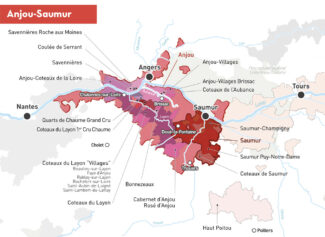
Another phase of the revolution is the revival of Chenin, which fell out of favor during the second half of the last century as did the native red wine grape, Grolleau. Mark Angeli of La Ferme de la Sansonnière,who arrived in 1989, claims, “Dry Chenin had been gone from Anjou for 50 years, and the few reds being made were mostly rot-gut. Appellation rules required them to be made from the two Cabernets—Franc and Sauvignon—even though old-vine parcels of Grolleau and Pineau d’Aunis thrived throughout the area.”
The region has been attracting maverick winemakers who recognize the scant precedent for complex, dry wines made from Chenin Blanc and Grolleau, and who have been happy to bottle their rule-busting wines, farmed organically, under the relatively lowly ‘Anjou’ appellation or even labeled simply as ‘Vin de France.’
Touraine: The Original Breeding Ground of Natural Wines & Pioneering Winemakers
Most people are more familiar with the Loire’s bookends, Muscadet and Sancerre. But between them lie 79 AOPs representing what InterLoire (the official organization of producers, merchants and traders involved in the production and promotion of Loire wines) calls, “The most extensive, diversified and original vineyards in Europe.”
The AOP covering Touraine stretches from Anjou to the west to the Sologne in the east, converging near the point where the Loire River and its tributaries meet. It covers 104 communes in Indre-et-Loire and 42 in Loir-et-Cher.
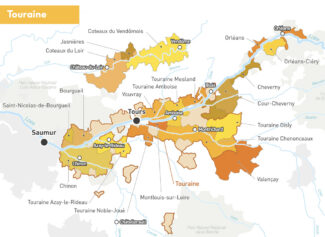
Most of the vineyards are located southeast of Tours on the slopes that dominate the Cher River and the land between the Cher and the Loire. With nearly 13,000 acres under vine, the climate varies dramatically as you move inland; oceanic conditions dominate the west, becoming more continental as you move east. These climatic differences combined with varied soils determine the choice of grape variety planted (with later-ripening varieties grown in the west and earlier-ripening ones in the east) and account for the wide variety of wine styles produced.
Among these styles are the personal statement’ wines of natural winemakers, who have found in Touraine a vibrant opportunity for self-expression as well as terroir that, through minimal intervention, display their origins perhaps even more faithfully than their rule-bound AOP counterparts.
Cabernet Franc
Who’s your daddy? Biologically, both Cabernet Sauvignon and Merlot share Cabernet Franc as a parent, and the grape itself displays characteristics inherited by both. In cooler climates, Cabernet Franc shows off graphite and red licorice notes, while in warm regions, it exhibits tobacco and leather aromas. There is also a vegetal edge, which may strike the palate as tasting of green pepper or jalapeño.
In Bordeaux, it is generally a minor component of Cabernet Sauvignon and Merlot blends, although in Pomerol and Saint-Émilion it adopts a larger, more highly-regarded role. Cheval Blanc, for example, is typically around two-thirds Cabernet Franc while Ausone is an even split between Cabernet Franc and Merlot.
With the Loire Valley’s cool, inland climates it becomes a star performer. The appellations of Chinon (in Touraine) along with Saumur and Saumur-Champigny (in Anjou) are important bastions of Cabernet Franc, where the wine is prized for forward aromas of ripe summer berries and sweet spices.
The local Loire Valley name for Cabernet Franc is Breton; a reference to the man credited with bringing the variety to popularity in the 17th Century.
Manoir de la Tête Rouge (Anjou-Saumur)
Intense, driven and passionate, Guillaume Reynouard is the fox in charge of the chicken coop—as well as being a winemaker, he is president of the Syndicat des Vins Saumur and has a particular enmity for growers who rip out Pineau d’Aunis in favor of easier-to-grow varieties.
Taking charge of Domaine Manoir de la Tête Rouge in 1995, Guillaume soon converted to organics and was certified Biodynamic in 2010. The estate enjoys remarkably productive clay/ limestone terroir and he takes pride in ‘living vineyards’ where the soil is worked by hand to ensure that roots go deep and grass grows between rows to promote insect and other plant life; synthetic chemicals are prohibited. In the cellar, grapes are fully destemmed, indigenous yeasts are preferred, with no additions and very minimal sulfur use.
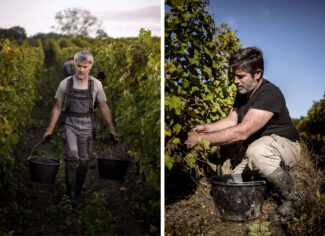
Guillaume Reynouard, Manoir de la Tête Rouge
According to Reynouard, “Responsible agriculture is a way of life and of thinking. When growing grapes, I aspire to act sensibly for the planet—a state of mind that develops naturally from a respectful relationship with nature. Knowing how to adapt to a changing environment requires constant questioning while the planting of forgotten varieties such as Pineau d’Aunis, the incorporation of trees into the cultivation of the vine (agroforestry) and the gradual abandonment of ‘modern’ oenology are avenues that I have followed for more than 20 years.”
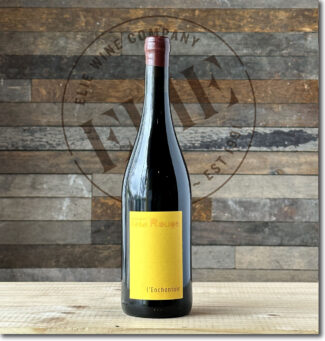 Manoir de la Tête Rouge ‘l’Enchentoir’, 2018 Saumur-Puy-Notre-Dame ‘natural’ ($43)
Manoir de la Tête Rouge ‘l’Enchentoir’, 2018 Saumur-Puy-Notre-Dame ‘natural’ ($43)
In the sub-appellation Saumur-Puy-Notre-Dame, ‘l’Enchentoir’ is a venerable Cabernet Franc lieu-dit. Planted over Turonian limestone in 1959 using sélections massales, the pressed wine is aged in 300-liter barriques for one year plus another six months in Béton cuves (pre-cast concrete tanks). It displays depth and delicacy, showing blackberry and cherry over violets, rose petals and savory herbs.
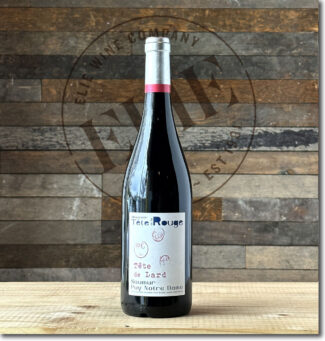 Manoir de la Tête Rouge ‘Tête de Lard’, 2018 Saumur-Puy-Notre-Dame ($27)
Manoir de la Tête Rouge ‘Tête de Lard’, 2018 Saumur-Puy-Notre-Dame ($27)
100% Cabernet Franc from two parcels averaging 20 years of age, ‘Tête de Lard’—Head of Bacon’—is fermented on native yeasts and spends a year in used 300-liter barrels. The final blend is done in concrete tanks, where the wine rests for 4 months before bottling. Filled with ripe tones of blueberry and cassis with a slight vegetal edge, this is a natural wine suited for the cellar, but one that should be tasted every couple years to keep an eye on the progress.
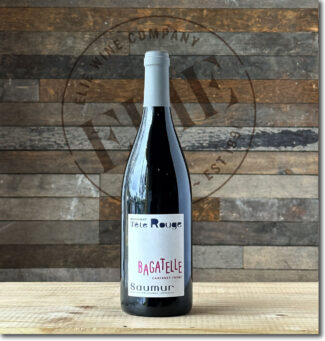 Manoir de la Tête Rouge ‘Bagatelle’, 2020 Saumur Rouge ($21)
Manoir de la Tête Rouge ‘Bagatelle’, 2020 Saumur Rouge ($21)
A bagatelle is something easy; something that requires little effort. This is not a comment on the precision that is de rigeur in Guillaume Reynouard’s winemaking, especially since the tech sheet for this wine specifies the terroir as 30% Jurassic limestone, 60% Turonian limestone and 10% silt, and the vines as being pruned in alternating Guyot-Poussard. Rather, the wine itself is created simply and naturally, macerated three weeks without yeasting, without chaptalization and without additives, then matured without sulfur. These minuses equal an ultimate plus; a pure Cabernet Franc with aromas of plum, raspberry, and cherry with notes of red pepper, spice, and graphite with silky tannins and bright acidity.
Le Sot de l’Ange (Touraine)
Although the label’s name roughly translates to ‘Idiot Angel’, winemaker Quentin Bourse is anything but. Before taking over a friend’s estate in time for the 2013 vintage, Bourse worked in various fields (some wine related; others not) including numerous internships in the surrounding area. Having learned technique from both natural and conventional producers, notably a six-month stage at the famed Vouvray producer Domaine Huet, his winemaking philosophy was shaped by philosophy and a relentless work ethic that leans toward innovation and the sort of perfectionism that is often at the root of natural wines—at least the ones that shine.
Unusual for the neighborhood, Bourse’s estate is certified biodynamic. Ranging across 30 acres, he is especially attracted to indigenous varieties that capitalize on the clay and silica soils for which the region is famous. In many of his parcels, white silex stones litter the rows making it look as if the terroir is seeping from the earth.
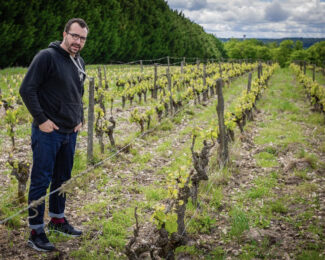
Quentin Bourse, Le Sot de l’Ange
He shares a cellar with old-school producer Pascal Pibaleau, where his grapes are painstakingly sorted four times before whole-cluster fermentation with indigenous yeasts in tank, and then a slow, gentle pressing that in some cases lasts five or more hours. Aging occurs either entirely in tank, neutral barriques, or amphorae depending on the cuvée, and zero sulfur is added during the winemaking process for the reds; a touch is added for the whites.
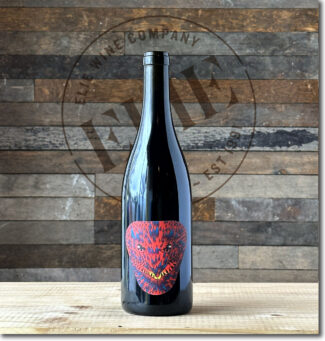 Le Sot de l’Ange ‘Karadras’, 2018 VdF Loire-Touraine Cabernet Franc ‘natural’ ($24)
Le Sot de l’Ange ‘Karadras’, 2018 VdF Loire-Touraine Cabernet Franc ‘natural’ ($24)
‘Karadras’ is 88% Cabernet Franc and 12% Côt; the name proves to be somewhat inexplicable since it appears in different spellings on different bottlings. What remains the same is that after being manually destemmed in wicker baskets, the fruit ferments in open wooden tanks and comes out the other end with a classic profile; a bit of color from the Côt, herbaceous notes from the Cab Franc. It offers dusty plum, soil, cocoa, and brambles; the palate is lively and fresh, lifted by crunchy acidity framing the ripe high-toned blue fruits, juicy plum and earthy spices.
Côt
‘Côt by any other name would smell like Malbec.’ With apologies to the Bard, the renaissance of this dark, potent grape in the Loire sees a remarkable change in profile. In southwest France—Cahors in particular—the variety produces heavy wines that are not only amenable to long periods of aging, they virtually demand it. In the Cher Valley, in the heart of Touraine, the grape finds a kinder, gentler environment where it produces a different sort of wine; less aggressively tannic with fresh aromas of black cherry and cassis. In part, it is the climate, but the fiercer aspects Côt as they appear in Cahors’ ‘black wines’ are tempered in the field, where vines are pruned short with a vendange vert after véraison. To avoid the additional tannins of oak, most of the grapes are fermented and aged in stainless steel tanks with a few barriques blended in.
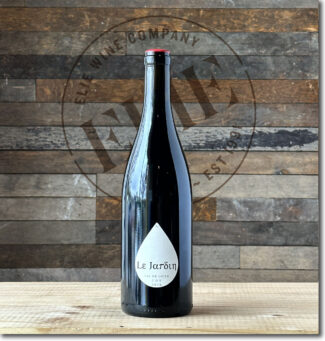 Le Sot de l’Ange ‘Le Jardin’, 2018 IGP Val-de-Loire ‘Côte’ ‘natural’ ($45)
Le Sot de l’Ange ‘Le Jardin’, 2018 IGP Val-de-Loire ‘Côte’ ‘natural’ ($45)
100% Côt from an interesting lieu-dit with two distinct soil types—one section with clay and silex soils and the second with clay and limestone. The wine is vinified using whole-cluster fermentation in concrete tank; malolactic fermentation and élevage occur in terra cotta amphorae for 24 months. The wine shows aromas of freshly-picked bramble fruits, blackberry and currant, with slight Szechuan pepper notes and a touch of clove; a fresh, gripping palate.
Pineau d’Aunis
“Pineau d’Aunis is a regional grape found mostly around Anjou and Touraine in the Loire Valley,” says Arthur Hon, the U.S. spokesperson for Loire Valley Wines. “It can be used for still red, still rosé or sparkling rosé, though it’s more commonly blended and used for regional rosé.”
Named after the Prieure d’Aunis, a priory located halfway between Saumur and Champigny, d’Aunis is Loire’s birth child, and however well the adopted clan has done—Gamay, Cabernet Franc, Malbec—this grape may exemplify the terroirs of the Valley better than any. Still, it can be a problem child: Pineau d’Aunis is prone to producing irregular yields and with tightly packed bunches, it is highly susceptible to rot, including botrytis. It is also sensitive to the soil conditions it is grown in, requiring a balance of clay, sand and gravel as ideal conditions.
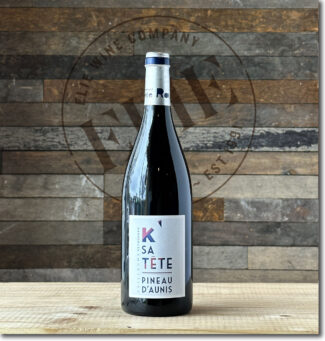 Manoir de la Tête Rouge ‘K’ Sa Tête’, 2020 VdF Loire-Saumur ‘Pineau d’Aunis’ Guillaume Reynouard ($27)
Manoir de la Tête Rouge ‘K’ Sa Tête’, 2020 VdF Loire-Saumur ‘Pineau d’Aunis’ Guillaume Reynouard ($27)
100% Pineau d’Aunis from the lieu-dit de l’Enchentoir where soils are treated using Maria Thun’s biodynamic advice; this includes cow-horn dung in the spring and horn silica after closure of the cluster (a somewhat exacting process that is exactly what is sounds like, using cow-horns filled with manure and/or silica). Maceration lasts 12 days in concrete tanks without yeasting, chaptalization or additives. The wine spends six months in oak barrels and bottling is done in June with 20 mg of added sulfur. This is a textbook Pineau d’Aunis with black pepper, green pepper and jalapeño on the nose with a palate that expands to include sweet, perfectly ripe blueberries.
Grolleau
Grolleau is the Loire Valley’s workhorse grape, used most often in the production of rosé. Although it remains one of the Loire’s most planted red-wine varieties, new plantings have dropped steadily for the last 50 years. While Grolleau is high yielding, providing a steady, reliable harvest, it poses several challenges for growers as it is susceptible to disease and not a particularly flavorful stand-alone variety. It is a dark grape on the vine, but thin-skinned, meaning that there is not much chance for color extraction, so it is rarely used to produce red wines.
Grolleau-based wines tend to be high in acid, moderate in alcohol, and may show aromas of strawberry, raspberry and cherry; as a rosé, it is reminiscent of watermelon, tangerine, rose petals and red candy.
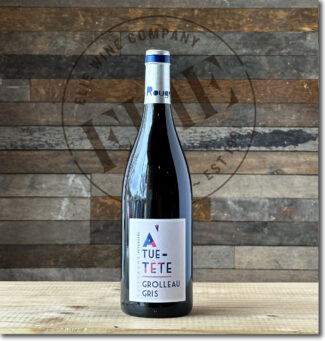 Manoir de la Tête Rouge ‘À Tue Tête’, 2021 VdF Loire-Saumur ‘Grolleau Gris’ Guillaume Reynouard ‘natural’ ($25)
Manoir de la Tête Rouge ‘À Tue Tête’, 2021 VdF Loire-Saumur ‘Grolleau Gris’ Guillaume Reynouard ‘natural’ ($25)
Vin de France is the most basic quality tier for wines from France, typically uncomplicated everyday drinks, likely blends, but occasionally are made from unlisted, unqualified varieties. Loosely translated to ‘loudly’, ‘À Tue Tête’ is a rare bottling from an even more rare variety, Grolleau Gris, which is a pink-skinned mutation of Grolleau. Handled with the biodynamic tool-kit, the wine shows red cherry, sandalwood and a bit of tropical fruit.
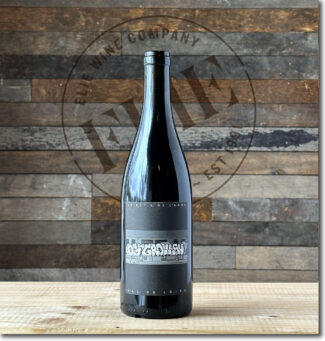 Le Sot de l’Ange ‘OG Grolleau’, 2020 IGP Val-de-Loire ‘natural’ ($39)
Le Sot de l’Ange ‘OG Grolleau’, 2020 IGP Val-de-Loire ‘natural’ ($39)
IGP (Indication Géographique Protégée) is a quality category used for French wine positioned between Vin de France and Appellation d’Origine Protégée (AOP). (The category superseded Vin de Pays in 2009.) Most significant in commercial terms is the fact that the wines may be varietals and labeled as such. ‘OG Grolleau’ comes from single parcel of old-vine Grolleau planted between 1945 and 1976; grapes are de-stemmed, given ten days of maceration, aged in amphorae and used oak barrels, then bottled without sulfur. Blueberry and violet dominate the nose while the palate resolves itself in a mineral crunchiness with beautiful acidity.
Gamay
Ever since Philippe de Bourgogne cast Gamay from the bosom of Burgundy six centuries ago, the variety has been derided and even despised outside its spiritual home, Beaujolais. Folks who were soured by the sweet and fruity Nouveau cult may bring that prejudice into Touraine, but that would be a mistake: Although once in the shadow of Anjou Gamay, select vignerons in Touraine have made monster strides with Gamay over the past couple decades and these wines now edge out the Gamays of Anjou in depth and complexity. They tend to be medium-bodied with a musky tone that share center stage with aromas of fern and capers intermingled with flinty minerals and plummy notes.
Clos Roussely (Touraine)
Clos Roussely was once a lowly outbuilding of the great fortification at Angé-sur-Cher and as it happens, its five-foot-thick Tuffeau walls serve to insulate the winery as efficiently as they once held off Attila the Hun. Not only that, but the 250-year-old hand-dug caves beneath it are ideal for aging the remarkable wines of Vincent Roussely. The transition from barn to vignoble began in 1917, when Anatole Roussely became the first of four generations to dedicate his life to detail; Vincent Roussely, his great-grandson, today works this remarkable terroir—22 acres of clay and limestone peppered with pockets of silex.
“It was my childhood dream to work these soils,” says Roussely, who inherited the estate in 2001. “The terroir is ideal for Sauvignon Blanc, which makes up about 80% of our plantings, but at the heart of Roussely is a small plot of old-vine Gamay. We also have Côt (Malbec), Pineau d’Aunis and a little Cabernet Franc. We have always farmed organically, both for the health of the vines and out of social responsibility, but we were officially certified in 2007.”
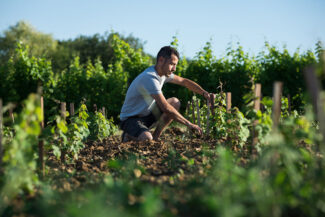
Vincent Roussely, Clos Roussely
The old-school methodology runs through every aspect of the winemaking process. Grapes are hand-harvested and are subject to slow, natural fermentation in the cool catacombs; Gamay undergoes the familiar Méthode Beaujolais, partial carbonic maceration in which some whole grapes are kept intact and begin alcoholic fermentation within the confines of their skins.
Evolving from tradition to technology, Roussely continues to experiment, using concrete eggs for some of his fermentations. “Innovative adaptation means more than simply exploring new techniques,” he says. “It also involves a commitment to ecological responsibility. Right now, about 65% of Loire Valley vineyards are organic and it’s our goal to see that number at 100% by 2030.”
C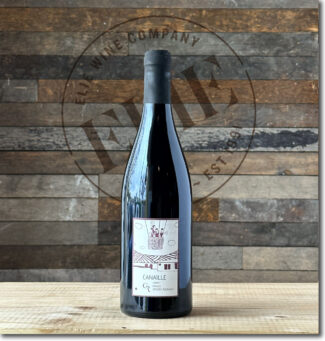 los Roussely ‘Canaille’, 2021 VdF Loire-Touraine ‘Gamay’ ($21)
los Roussely ‘Canaille’, 2021 VdF Loire-Touraine ‘Gamay’ ($21)
‘Canaille’ is the French word for ‘scoundrel.’ 100% Gamay from vines between 25 and 50 years old grown organically on clay and limestone. Aged six months in stainless steel, the old vines add a striking depth to this exuberant Gamay, replete with notes of crushed raspberry, black cherry and nutmeg.
Domaine Marie Thibault (Touraine)
“I grew up in the Loire Valley, but unlike many vignerons working in the Loire, I did not come from a winemaking family,” says Marie Thibault, adding, “But also unlike many of them, I have degrees in both biology and oenology.”
Marie Thibault began making wine in the early 2000s, working for a time with François Chidaine in Montlouis, where she fell in love with Chenin. In 2011, she founded her own nine-acre estate on a single windy slope in Azay-le-Rideau, a lesser known commune of Touraine. She immediately converted to organics and has been certified with Ecocert since 2014. Among the natural elements in her vineyards is the flock of two dozen ewes that graze between the vine rows during the autumn; every ten days, they are penned inside a new hectare to keep the soil naturally fertile and the grass clipped.
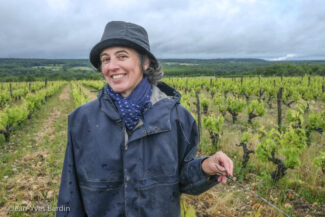
Marie Thibault, Domaine Marie Thibault © Jean-Yves Bardin
“My vineyard is small, but the soils are extremely varied and as such, so are the grapes I grow. I work with Côt (Malbec), and have a special love for Gamay, Grolleau, Chenin and Sauvignon Blanc. Most of my vines are at least 50 years old. I compensate for small production by purchasing from organic estates nearby.”
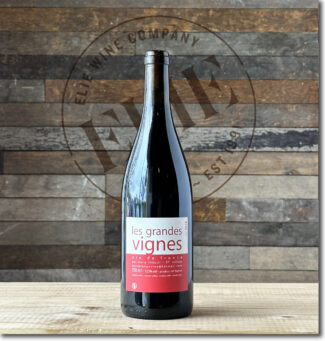 Domaine Marie Thibault ‘Les Grandes Vignes’, 2018 VdF Loire-Touraine ‘Gamay’ ‘natural’ ($41)
Domaine Marie Thibault ‘Les Grandes Vignes’, 2018 VdF Loire-Touraine ‘Gamay’ ‘natural’ ($41)
Thibault’s unique lens on Gamay is seen in this example produced from 50+ year-old vines she discovered growing adjacent to her plot on flinty silex soil. The vines were untrained and un-trellised, and harvest was exceptionally labor-intensive. She allows a 10-month maceration in order to shows off the Gamay’s savory side, with crisp rhubarb, earthy red berry notes and fine-grained, well-integrated tannins showcased.
Jérémy Quastana (Touraine)
Jérémy Quastana is a young vigneron who trained under Olivier Lemasson for a few years before snagging five acres of his own near Lemasson’s main plot in the Loir-et-Cher not far from Cheverny. Prior to that, Jeremy learned the trade at Marcel Lapierre’s Beaujolais winery and did a six-month internship at Clos Ouvert in Chile.
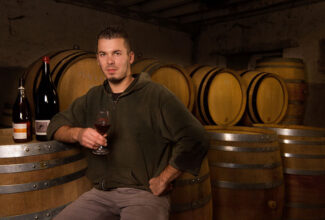
Jérémy Quastana, photo: Alberto Rodriguez
Quastana farms a single plot composed of young-vine Gamay, middle-aged Côt and old-vine Gamay planted on a gentle slope of clay over silex. Jeremy has not applied for AOP recognition, since—like many natural winemakers—he knows the challenge of following commission rules. His wines are unembellished—fresh, pure juice that may serve as a perfect aperitif on a warm day, but which always qualify as a serious approach to winemaking the natural way.
Syrah
Syrah, in France most often associated with the sultry climes of the Northern and Southern Rhône; Côte Rôtie means ‘roasted slope’ to give an indication of how hot this area gets. In Hermitage, the grape produces prestigious wines packed with sun-ripened fruit flavors and lots of potential for aging—these wines are deep, black, tannic and powerful wines.
In the Loire, it is not widely planted, but when vinified using the carbonic maceration technique of Beaujolais, it produces a similar sort of fruity, wonderful concoction that shows off a more delicate side.
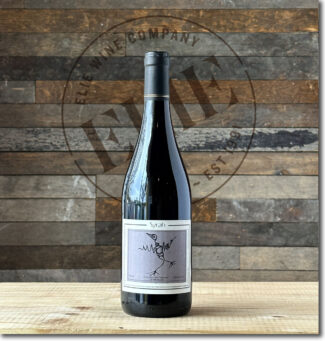 Jérémy Quastana ‘Syrah’, 2021 VdF Loire-Touraine ‘natural’ ($30)
Jérémy Quastana ‘Syrah’, 2021 VdF Loire-Touraine ‘natural’ ($30)
Some mystery surrounds the origin of these grapes since the Quastanas will purchase grapes on occasion. Wherever this Syrah originated, it is unique interpretation, filled with wild strawberries, white pepper and a pleasant grassiness behind sparks of acidity. Tannins are subdued, and this is an immediate wine that is best consumed young.
Notebook …
The Gesture of Being ‘Natural’: Wine in The ‘Raw’
In wine, ‘natural’ is a concept before it’s a style. It refers to a philosophy; an attitude. It may involve a regimen of rituals or it may be as simple as a gesture, but the goal, in nearly every case, is the purest expression of fruit that a winemaker, working within a given vineyard, can fashion. Not all natural wines are created equal, and some are clearly better than others, but of course, neither is every estate the same, nor every soil type, nor each individual vigneron’s ideology.
The theory is sound: To reveal the most honest nuances in a grape’s nature, especially when reared in a specific environment, the less intervention used, the better. If flaws arise in the final product—off-flavors, rogue, or ‘stuck’ fermentation (when nature takes its course), it may often be laid at the door of inexperience. Natural wine purists often claim that this technique is ancient and that making wine without preservatives is the historical precedent. That’s not entirely true, of course; using sulfites to kill bacteria or errant yeast strains dates to the 8th century BCE. What is fact, however, is that some ‘natural’ wines are wonderful and others are not, and that the most successful arise from an overall organoleptic perspective may be those better called ‘low-intervention’ wine, or ‘raw’ wine—terminology now adopted by many vignerons and sommeliers.
At its most dogmatic and (arguably) most OCD, natural wines come from vineyards not sprayed with pesticides or herbicides, where the grapes are picked by hand and fermented with native yeast; they are fined via gravity and use no additives to preserve or shore up flavor, including sugar and sulfites. Winemakers who prefer to eliminate the very real risk of contaminating an entire harvest may use small amounts of sulfites to preserve and stabilize (10 to 35 parts per million) and in natural wine circles, this is generally considered an acceptable amount, especially if the estate maintains a biodynamic approach to vineyard management.
In all things wine, ‘balance’ is a key to the kingdom; it is a term interchangeable with harmony, and may reference acid, alcohol level, grape sugars and tannin, but also, to a scale in which the long-term health of the product is considered along with the flavors inherent on release. More than just a current radar blip in trendy social capital a naturalistic approach to winemaking is not only more honest, but better for a sustainable environment: It’s a nod to the past and a gesture to the future.
VdF & IGP Designations: Forgoing Restrictions
Wines in France are classified into one of three categories: AOP (Appellation d’Origine Protegée, formerly AOC), IGP (formerly Vin de Pays) and Vin de France. AOP wines are identified only by the names of their appellations, usually without varietal descriptions; the next level, IGP, comes from broader regions, and may be identified by varietal names; and the lowest level has no indication of origin at all.
Vin de France is a catch-all. Produced often at high yields, most Vins de France are low-priced, but hidden within them are top wines, pushed out of the appellation system, that can be every bit as good as the best in the AOP. They can be hard to identify, because origins aren’t obvious – many indicate only the names of producer and cuvée – and while they may seem expensive for this lowly category, they can offer remarkable interest. With only a few high-flying Vins de France, this is a small class, but it’s well worth investigating.
- - -
Posted on 2023.05.02 in Saumur-Champigny, Touraine, Anjou, France, Wine-Aid Packages, Loire
Featured Wines
- Notebook: A’Boudt Town
- Saturday Sips Wines
- Saturday Sips Review Club
- The Champagne Society
- Wine-Aid Packages
Wine Regions
Grape Varieties
Aglianico, Albarino, Albarín Blanco, Albarín Tinto, Albillo, Aleatico, Arbanne, Aubun, Barbarossa, barbera, Beaune, Biancu Gentile, bourboulenc, Cabernet Franc, Cabernet Sauvignon, Caino, Caladoc, Calvi, Carcajolu-Neru, Carignan, Chablis, Chardonnay, Chasselas, Clairette, Corvina, Cot, Counoise, Erbamat, Ferrol, Fiano, Frappato, Friulano, Fromenteau, Fumin, Garnacha, Gewurztraminer, Godello, Graciano, Grenache, Grolleau, Groppello, Juan Garcia, Lambrusco, Loureira, Macabeo, Macabou, Malvasia, Malvasia Nera, Marsanne, Marselan, Marzemino, Melon de Bourgogne, Merlot, Mondeuse, Montanaccia, Montepulciano, Morescola, Morescono, Moscatell, Muscadelle, Muscat, Natural, Nero d'Avola, Parellada, Patrimonio, Petit Meslier, Petit Verdot, Pineau d'Aunis, Pinot Auxerrois, Pinot Blanc, Pinot Gris, Pinot Meunier, Pinot Noir, Poulsard, Prieto Picudo, Rondinella, Rousanne, Roussanne, Sangiovese, Sauvignon Blanc, Savignin, Semillon, Souson, Sparkling, Sumoll, Sylvaner, Syrah, Tannat, Tempranillo, Trebbiano, Trebbiano Valtenesi, Treixadura, Trousseau, Ugni Blanc, vaccarèse, Verdicchio, Vermentino, Viognier, Viura, Xarel-loWines & Events by Date
- April 2024
- March 2024
- February 2024
- January 2024
- December 2023
- November 2023
- October 2023
- September 2023
- August 2023
- July 2023
- June 2023
- May 2023
- April 2023
- March 2023
- February 2023
- January 2023
- December 2022
- November 2022
- October 2022
- September 2022
- August 2022
- July 2022
- June 2022
- May 2022
- April 2022
- March 2022
- February 2022
- January 2022
- December 2021
- November 2021
- October 2021
- September 2021
- August 2021
- July 2021
- June 2021
- May 2021
- April 2021
- March 2021
- February 2021
- January 2021
- December 2020
- November 2020
- October 2020
- September 2020
- August 2020
- July 2020
- June 2020
- May 2020
- April 2020
- March 2020
- February 2020
- January 2020
- December 2019
- November 2019
- October 2019
- September 2019
- August 2019
- July 2019
- June 2019
- May 2019
- April 2019
- March 2019
- February 2019
- January 2019
- December 2018
- November 2018
- October 2018
- September 2018
- August 2018
- July 2018
- June 2018
- May 2018
- April 2018
- March 2018
- February 2018
- January 2018
- December 2017
- November 2017
- October 2017
- September 2017
- August 2017
- July 2017
- June 2017
- May 2017
- April 2017
- March 2017
- February 2017
- January 2017
- December 2016
- November 2016
- October 2016
- September 2016
- August 2016
- July 2016
- June 2016
- May 2016
- April 2016
- March 2016
- February 2016
- January 2016
- December 2015
- November 2015
- October 2015
- September 2015
- August 2015
- July 2015
- June 2015
- May 2015
- April 2015
- March 2015
- February 2015
- January 2015
- December 2014
- November 2014
- October 2014
- September 2014
- August 2014
- July 2014
- June 2014
- April 2014
- March 2014
- February 2014
- January 2014
- December 2013
- November 2013
- October 2013
- September 2013
- August 2013
- July 2013
- June 2013
- May 2013
- April 2013
- March 2013
- February 2013
- January 2013
- December 2012
- November 2012
- October 2012
- February 2004
Search



